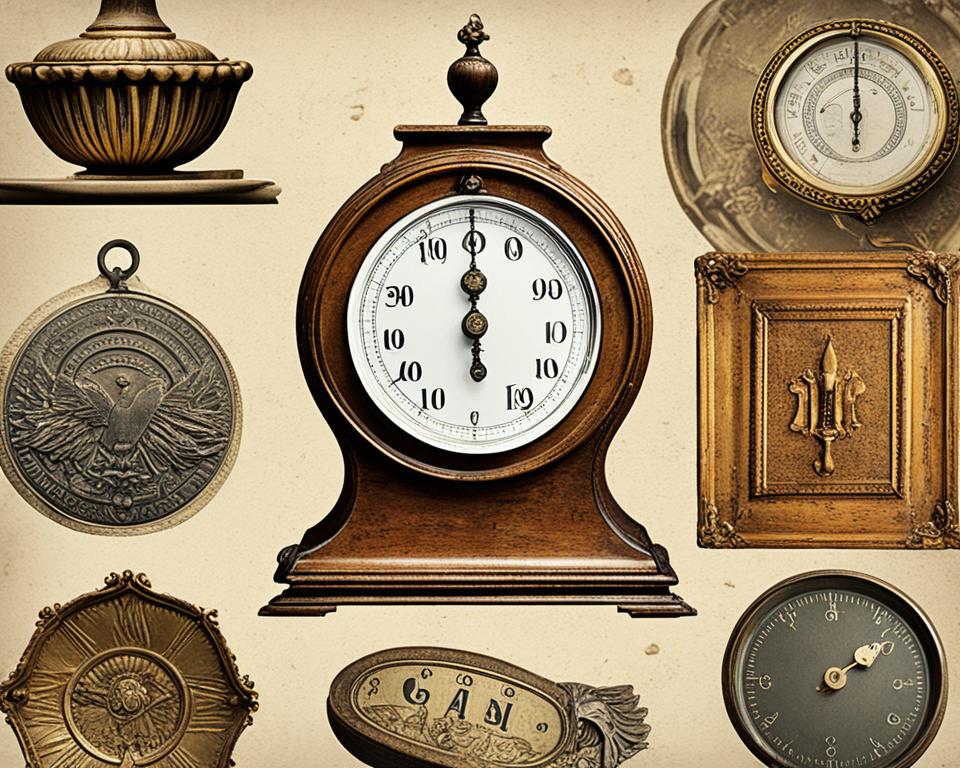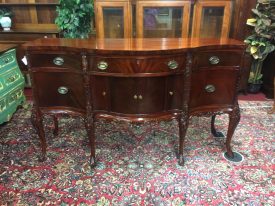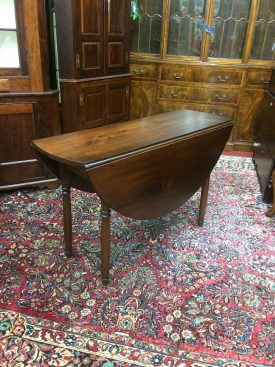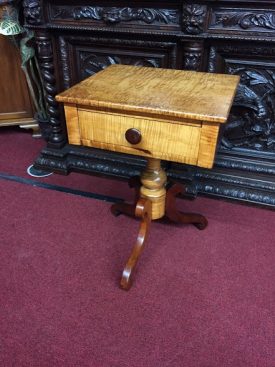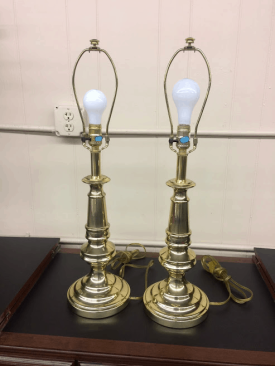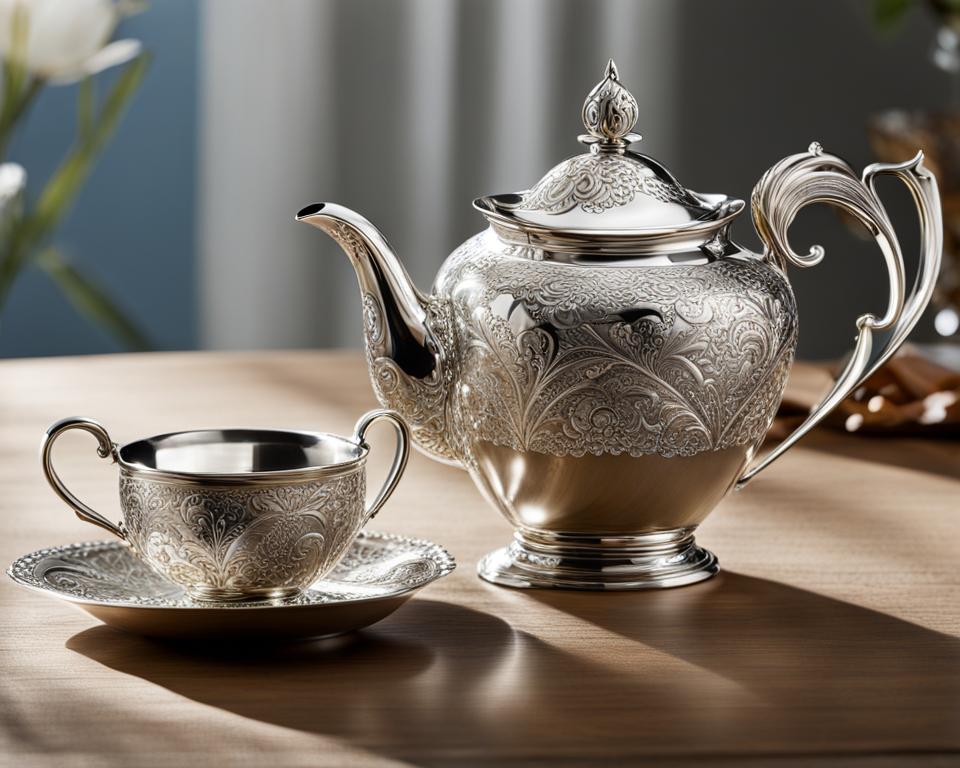The value of antique decor items is determined by a variety of factors. These factors include age, rarity, condition, provenance, materials used, craftsmanship, and aesthetic appeal. Age plays a significant role in determining value, with older pieces often being more desirable. Rarity also contributes to value, as items that are difficult to find are more sought after. The condition of the item, including any damage or restoration, can greatly affect its worth. Provenance, or the item’s history and origin, can also add to its value. Additionally, the materials used, the level of craftsmanship, and the overall aesthetic appeal of the item contribute to its appraisal.
Key Takeaways:
- The age of an antique decor item impacts its value, with older pieces often being more desirable.
- Rarity adds to the value of an antique decor item, as hard-to-find pieces are more sought after.
- The condition of an antique decor item, including any damage or restoration, can significantly affect its worth.
- Provenance, or the item’s history and origin, adds to its value by providing authenticity and historical significance.
- The materials used and level of craftsmanship contribute to an antique decor item’s overall quality and appeal.
Age
The age of an antique decor item is a significant factor in determining its value. Older pieces are often more sought after by collectors and enthusiasts. The rarity of finding an item from a specific time period can make it more valuable, as it represents a piece of history. Antique decor items that are several decades or centuries old are often considered more valuable than newer pieces.
Rarity
The rarity of an antique decor item is a significant factor that contributes to its value. Collectors and enthusiasts are often drawn to rare and uncommon pieces, making them more sought-after in the market. These hard-to-find antiques can command higher prices due to their scarcity and desirability.
Rarity can be influenced by various factors, such as limited production quantities, unique design features, or the scarcity of similar items in the market. When an antique decor piece is difficult to find, its value tends to increase as collectors strive to add these rare gems to their collections.
For example, an antique vase from a renowned ceramic artist’s limited edition collection may be considered rare and valuable due to its limited production and unique design elements. Similarly, a vintage chandelier with intricate craftsmanship and distinctive features may be classified as an uncommon piece, attracting collectors who appreciate its exceptional qualities.
“Rare antique decor items are highly sought after by collectors, as they offer a glimpse into the past that few can experience. The exclusivity and uniqueness of these uncommon pieces make them even more desirable in the eyes of discerning collectors.”
To illustrate the significance of rarity in the antique decor market, consider the following examples:
| Antique Item | Level of Rarity |
|---|---|
| 18th-century Rococo chair featuring intricate carvings | Rare |
| Art Deco silver tea set with a unique geometric design | Uncommon |
| Victorian porcelain doll with rare hand-painted details | Hard-to-find |
As depicted in the table above, each antique item’s rarity contributes to its value. The rarer an item is, the more collectors are willing to pay to acquire it, making it a prized possession in their collections.
In conclusion, the scarcity and uniqueness of rare antique decor pieces make them highly sought after in the market. Their exclusivity and desirability drive up their value, making them valuable additions to any antique collection.
Condition
The condition of an antique decor item is a crucial factor in determining its value. The overall state of the item, including any damage or restoration, can significantly impact its worth. Collectors and buyers generally prefer items that are in excellent, original condition as they retain their historical integrity. However, minor damages such as chips, cracks, or wear are expected due to the item’s age and can be considered acceptable.
When evaluating the condition of an antique decor item, it is important to assess the extent of any damage and determine its impact on the item’s functionality and aesthetic appeal. A thorough assessment should be conducted to identify any repairs or restoration that may have been performed on the item. Professional appraisers can provide valuable insights into the impact of restoration on an antique’s value.
*An image of a well-preserved antique decor item can help illustrate the concept of evaluating condition and its impact on value. Showcasing an antique in excellent condition can emphasize the importance of preserving the historical integrity of these items. It can be visually appealing to the readers and relevant to the topic.*
Antique restoration can have both positive and negative effects on an item’s value. When restoration is done professionally and sympathetically, it can enhance the value by improving the item’s overall appearance, functionality, and stability. Restorations that are historically accurate and closely replicate the original craftsmanship can be seen as adding value to the piece.
On the other hand, poorly executed or excessive restoration can negatively impact an item’s value. Over-restoration, which involves significant modifications or replacements that deviate from the item’s original form, can diminish its historical significance and authenticity. Restoration should be approached with caution, and any significant alterations made to an antique decor item should be disclosed transparently.
Overall, the evaluation of an antique decor item’s condition is an essential step in determining its value. Collectors, buyers, and appraisers alike consider the integrity, authenticity, and originality of an item when assessing its worth. By carefully examining and documenting an antique’s condition, one can better understand its historical significance and market value.
Provenance
The provenance of an antique decor item holds valuable insights into its history and origin. Understanding an item’s lineage, previous owners, and notable historical events associated with it adds authenticity and allure, making it more desirable among collectors and enthusiasts.
By delving into the antique decor history, one can uncover fascinating stories behind these treasured pieces. The item’s origin provides context and a deeper appreciation of its cultural significance. Antique decor lineage reveals the traditions and craftsmanship that have been passed down through generations, contributing to its value and uniqueness.
Equally significant is the knowledge of notable previous owners that have possessed the antique decor item throughout its journey. If a piece has been owned by renowned individuals or has a connection to important historical figures, its allure and value are further heightened.
For instance, imagine owning an antique writing desk that once belonged to a famous author, or a set of dining chairs that were used by a prominent historical figure. Such associations not only enhance the item’s provenance but also make it a cherished piece of history.
The provenance of an antique decor item adds an additional layer of authenticity and interest, making it more desirable and valuable.
Researching and documenting the provenance of an antique decor item enhances its historical and cultural significance. It also provides potential buyers with invaluable information, assuring them of the item’s authenticity and unique place in history.
Next, let’s explore how the materials used in the construction of antique decor items contribute to their value and appeal.
Materials Used
The value of an antique decor item is greatly influenced by the materials used in its construction. Different materials, such as fine woods, rare metals, or luxurious fabrics, can not only enhance the item’s appeal but also contribute to its overall value.
In the world of antique furniture, certain types of wood hold significant value. For example, furniture crafted from mahogany or walnut is highly coveted by collectors and enthusiasts. The richness and durability of these woods, along with their beautiful natural grain patterns, make them desirable choices for antique decor.
The quality of craftsmanship and attention to detail exhibited in the materials used also play a crucial role in determining an item’s worth. Skilled artisans often employ intricate joinery techniques and decorative elements to create unique and visually stunning pieces. This level of craftsmanship adds artistic value and further increases the overall appeal of the item.
| Material | Description |
|---|---|
| Wood | Includes oak, walnut, mahogany, cherry, and other fine woods known for their durability and natural beauty. |
| Metalwork | May include brass, bronze, silver, or other rare metals used in decorative elements, fittings, or accents. |
| Upholstery | Refers to the fabrics, leathers, or textiles used in furniture and soft furnishings, showcasing luxurious and intricate designs. |
Every material used in an antique decor item has its unique character and contribution to its overall value. The choice of materials, combined with the level of craftsmanship, helps create timeless pieces that stand the test of time and continue to captivate collectors and enthusiasts.
Craftsmanship
The level of craftsmanship displayed in antique decor items is a key factor in determining their value. Skilled artisans and craftsmen who have dedicated their time and expertise to create pieces with intricate details are highly regarded in the antique market. The precision and artistry exhibited in the construction of these items contribute to their overall worth.
Fine craftsmanship serves as a testament to the quality and expertise of the maker. It showcases their mastery of techniques and attention to detail, making the item more desirable to collectors and enthusiasts alike. The intricate details crafted by these skilled artisans bring a unique charm and character to each piece.
Whether it’s a beautifully carved wooden chair, an intricately woven tapestry, or a meticulously crafted piece of jewelry, the level of craftsmanship is evident in the finished product. These antique decor items not only possess historical value but also serve as a testament to the expertise and artistry of their creators.
Collectors and buyers appreciate the time and effort that goes into creating such masterpieces. The painstaking dedication to each and every detail adds an extra layer of value to the item. The craftsmanship displayed in antique decor items contributes to their desirability, rarity, and ultimately, their market value.
Aesthetic Appeal
The aesthetic appeal of antique decor items plays a significant role in determining their value. Pieces that possess visually pleasing designs, unique details, and overall beauty are highly sought after by collectors and enthusiasts alike. The design elements and aesthetics of an antique decor piece contribute to its desirability and attractiveness in the market.
When evaluating the aesthetic appeal of an antique decor item, several factors come into play. The overall visual appeal of the piece, including its form, proportions, and decorative features, can significantly impact its appraisal. The harmonious combination of these design elements creates a captivating visual experience, enhancing the item’s value.
“The design elements and aesthetics of an antique decor piece contribute to its desirability and attractiveness in the market.”
At times, specific design periods, such as Art Nouveau, Art Deco, or Victorian, are highly sought after for their distinct aesthetic qualities. These design movements showcase unique styles, motifs, and materials, making them particularly valuable to collectors with a taste for antique decor.
Moreover, the craftsmanship and attention to detail within the design can greatly elevate an antique decor item’s aesthetic appeal. Intricate carvings, ornate patterns, and delicate engravings exemplify the skill of the artisans who created these pieces, further captivating buyers and driving up their value.
Antique decor items that possess a timeless aesthetic appeal have a lasting charm that transcends trends and fads. They can effortlessly integrate into various interior design styles and evoke a sense of nostalgia, making them versatile pieces for both traditional and contemporary settings.
The aesthetic appeal of an antique decor item has the power to evoke emotion and fascination in collectors and enthusiasts. It reflects the craftsmanship, creativity, and artistic vision of the past, making these pieces cherished symbols of history and culture.
Key Elements of Aesthetic Appeal
| Design Elements | Description |
|---|---|
| Form | The overall shape and structure of the item, including its silhouette and proportions. |
| Decorative Features | Intricate carvings, engravings, or embellishments that add visual interest and enhance the piece’s aesthetic appeal. |
| Materials | The choice of high-quality and desirable materials, such as fine woods, rare metals, or luxurious fabrics. |
| Craftsmanship | The level of skill, precision, and attention to detail demonstrated by the artisans who created the piece. |
| Design Period | The style and motifs associated with a particular design movement, reflecting the trends and aesthetics of a specific era. |
The combination of these key elements creates an antique decor item that exudes timeless beauty and captivates collectors with its aesthetic allure.
Appraisal Process
The appraisal process is a crucial step in determining the value of an antique decor item. Professional appraisers possess the expertise necessary to assess various factors that contribute to an item’s worth. These factors include:
- Age: The age of the antique decor item is considered to evaluate its historical importance and rarity.
- Rarity: The scarcity of an item in the market influences its desirability and value.
- Condition: The overall condition, including any damages or restorations, affects the item’s appraisal.
- Provenance: The item’s history and origin, including notable previous owners, impact its authenticity and value.
- Materials: The quality and significance of the materials used in the item’s construction contribute to its appraisal.
- Craftsmanship: The level of skill and artistry employed in creating the item influences its value.
- Aesthetic Appeal: The visual attractiveness and design elements of the item play a significant role in its appraisal.
Professional appraisers utilize their knowledge of the antique market to provide an accurate valuation. They consider market trends, demand, and comparable sales to determine an item’s worth. Additionally, online valuation services and research can provide a preliminary estimate of an antique decor item’s value.
Working with a reliable and experienced appraiser is vital to ensure an accurate evaluation. Their expertise and understanding of the market dynamics guarantee a fair appraisal, allowing antique decor enthusiasts to make informed decisions.
| Factors | Description |
|---|---|
| Age | The item’s age and historical significance. |
| Rarity | The scarcity of the item in the market. |
| Condition | The overall state of the item, including any damages or restorations. |
| Provenance | The item’s history and origin, including notable previous owners or historical significance. |
| Materials | The quality and type of materials used in the item’s construction. |
| Craftsmanship | The level of skill and artistry exhibited in creating the item. |
| Aesthetic Appeal | The visual attractiveness and design elements of the item. |
Researching Market Value
When it comes to determining the value of antique decor items, conducting thorough research is essential. Researching the market value allows you to gauge the worth of your antique pieces accurately. By exploring various sources and factors, you can gain valuable insights into the demand, trends, and prices for similar items. In this section, we will discuss some of the key aspects to consider when researching the market value of antique decor items.
Price Guides
Price guides are valuable resources that provide information on the market value of different types of antique decor items. These guides offer price ranges based on factors such as age, condition, rarity, and provenance. They serve as a useful starting point for understanding the potential value of your antique decor pieces. Consider consulting reputable price guides specific to your type of antique to get a sense of its market value.
Auction Records
Auction records provide valuable insights into the actual selling prices of antique decor items. Examining auction catalogs or online auction platforms can give you a realistic understanding of how much similar items have sold for recently. It is important to consider factors such as condition, provenance, and rarity when comparing auction records. This data can help you gauge the demand and market value for your antique decor pieces.
Online Platforms
Online platforms dedicated to antique sales and auctions are excellent sources of information for researching market value. These platforms allow you to browse through a wide range of antique decor items and view their prices. By exploring listings similar to your items, you can gain a better understanding of their market value. Take note of the condition, materials, and age of the items in order to make accurate comparisons.
Considering Multiple Sources
It is recommended to consult multiple sources when researching market value. This helps you gain a broader perspective and ensures you are considering a range of prices and opinions. Each source may have different insights or criteria for determining value, so gathering information from various price guides, auction records, and online platforms will give you a more comprehensive understanding of the market value for your antique decor pieces.
| Source | Description |
|---|---|
| Price Guides | Provides price ranges for different types of antique decor items |
| Auction Records | Offers insights into actual selling prices from recent auctions |
| Online Platforms | Enables browsing and comparison of prices for similar antique items |
By utilizing price guides, auction records, and online platforms, you can gather valuable data to help determine the market value of your antique decor items. Remember to consider various factors such as age, condition, rarity, and materials when comparing prices. Conducting thorough research empowers you to make informed decisions and ensures you are aware of the market value before selling or appraising your antique decor pieces.
Factors to Consider in Valuation
Valuing an antique decor item involves considering several crucial factors that contribute to its overall worth. These factors encompass the item’s age, rarity, condition, provenance, materials used, craftsmanship, aesthetic appeal, and the prevailing market trends. By evaluating each factor, one can ascertain a comprehensive understanding of the item’s value and arrive at an accurate valuation.
The Age Factor
Age plays a pivotal role in determining the value of antique decor items. The older an item, the more desirable it often becomes for collectors and enthusiasts. The historical significance associated with a particular time period adds to the allure and value of an antique decor piece.
The Rarity Element
Rarity contributes significantly to the value of an antique decor item. Pieces that are considered rare or uncommon tend to command higher prices in the market. Factors such as limited production, unique design features, or scarcity of similar items enhance an item’s value and desirability.
The Condition Assessment
Evaluating the condition of an antique decor item is crucial in determining its value. Items that are in excellent, original condition retain their historical integrity and are highly valued. On the other hand, any damage or restoration can markedly impact an item’s worth. Collectors and buyers generally prefer items with minimal damage and alterations.
The Provenance Consideration
The provenance, encompassing an item’s history and origin, is an important factor in valuing antique decor items. Pieces with well-documented provenance and notable previous owners often have higher value. The lineage and historical significance associated with an item can make it more appealing to collectors and contribute to its overall worth.
The Materials Utilized
The materials used in creating an antique decor item significantly influence its value. Fine woods, rare metals, and luxurious fabrics add to an item’s appeal and worth. Moreover, the quality of the materials used and the level of craftsmanship involved play a pivotal role in determining an item’s overall quality and value.
The Craftsmanship Contribution
The level of craftsmanship exhibited in an antique decor item greatly impacts its value. Items created by skilled artisans with intricate designs and attention to detail are highly sought after. The artistry and precision involved contribute to the item’s attractiveness and desirability, resulting in a higher valuation.
The Aesthetic Appeal
Aesthetic appeal is a significant component in valuing antique decor items. Pieces with visually pleasing designs, unique details, and overall beauty garner more interest from collectors. The combination of appealing design elements, proportions, and decorative features contributes to an item’s overall value.
The Impact of Market Trends
Current market trends play a crucial role in valuing antique decor items. Understanding the demand and trends in the antique market helps assess the potential value of an item. Factors such as changing tastes, popular design periods, and cultural influences can influence an item’s market value.
| Valuation Factors | Description |
|---|---|
| Age | Older items are often more valued due to their historical significance. |
| Rarity | Uncommon items that are difficult to find tend to command higher prices. |
| Condition | Items in excellent condition are more valuable, while damage or restoration can impact worth. |
| Provenance | Items with notable history and previous owners often have higher value. |
| Materials Used | Fine materials and quality craftsmanship enhance an item’s value. |
| Craftsmanship | Skilled artistry and attention to detail contribute to an item’s desirability. |
| Aesthetic Appeal | Visually pleasing designs and unique features increase an item’s value. |
| Market Trends | Current market demand and trends influence an item’s potential value. |
Seeking Professional Appraisal
When it comes to determining the value of an antique decor item, seeking a professional appraisal is essential. A professional antique appraiser has the expertise and knowledge to provide an accurate and reliable valuation based on their extensive experience in the field. They understand the intricacies of the market and can offer valuable insights into the worth of your antique decor piece.
Choosing a reputable and certified appraiser is crucial to ensure the appraisal is accurate and trustworthy. Look for an appraiser who specializes in antique decor and has a proven track record of providing reliable valuations. By working with a professional, you can have confidence in the assessment of your antique and make informed decisions based on their expert opinion.
One reliable valuation service is XYZ Antique Appraisals, known for their expertise in assessing antique decor items. With their in-depth knowledge of antiques and current market trends, they can provide you with a comprehensive and accurate appraisal. Their professional appraisers have a deep understanding of the various factors that influence the value of antique decor items, including age, rarity, condition, and provenance.
By seeking a professional antique appraisal, you can gain a clear understanding of the value of your antique decor item. Whether you are considering selling, insuring, or simply curious about the worth of your piece, a professional appraisal will provide you with the information you need to make informed decisions.
Benefits of Professional Antique Appraisal:
- Accurate and Reliable Valuation:
- Market Insights:
- Insurance Purposes:
- Selling Decisions:
A professional appraiser has the expertise to assess the value of your antique decor item accurately, taking into account all relevant factors that influence its worth.
By working with an appraiser who is well-versed in current market trends, you can gain valuable insights into the demand and value of your antique decor piece.
An appraisal from a professional antique appraiser can help you determine the appropriate insurance coverage for your valuable antique decor item.
Whether you are considering selling your antique decor item or not, knowing its accurate value can help you make informed decisions about your collection.
“A professional appraisal is an investment that provides you with the peace of mind of knowing the true value of your antique decor item.” – Jane Smith, Antique Collector
Selling Tactics
When it comes to selling antique decor items, utilizing effective strategies can significantly maximize their value. Whether you’re a collector looking to part ways with a prized piece or an antique dealer seeking to expand your customer base, understanding the right selling tactics is crucial. This section will explore some popular methods for selling antique decor, including consignment, online platforms, and auction houses.
Consignment
Consignment offers a convenient option for selling antique decor items. With consignment, you entrust your item to a reputable store or gallery, allowing them to showcase and sell it on your behalf. In exchange, the store will take a percentage of the sale as a commission. Consignment provides several advantages, such as access to the store’s established customer base and expertise in marketing and sales. It’s important to choose a store that specializes in antique decor and has a solid reputation in the industry.
Online Platforms
The digital age has opened up a world of possibilities for selling antique decor. Online platforms, such as dedicated antique marketplaces and auction websites, have become popular channels for reaching a broader audience of buyers. These platforms provide a convenient way to showcase your items with detailed descriptions and high-quality photos. They also offer features like bidding and negotiation tools that can help you secure the best price for your antique decor. Research various online platforms to find the ones that cater to your specific niche and target market.
Auction Houses
For those seeking a competitive selling environment, auction houses can be an excellent option. Auction houses attract collectors, dealers, and enthusiasts who are willing to bid on unique and rare antique decor items. Auctions create a sense of excitement and competition, often leading to higher sale prices. Working with a reputable auction house ensures that your item receives proper marketing and exposure to potential buyers. Additionally, auction houses typically have expert appraisers who can provide valuable insights into the value of your antique decor.
When deciding on a selling method, take into consideration the value and demand of your antique decor item, as well as your target market. Each method has its own benefits and considerations, so it’s important to choose the approach that aligns best with your goals and preferences.
| Selling Tactics | Pros | Cons |
|---|---|---|
| Consignment | – Access to an established customer base – Expertise in marketing and sales – Convenience of leaving the selling process to professionals |
– Commission fees – Limited control over the selling process – Dependence on the store’s reputation and performance |
| Online Platforms | – Wide reach and exposure to a global audience – Convenient listing and communication tools – Potential for competitive bidding |
– Competition from other sellers – Need for high-quality photographs and descriptions – Shipping and handling logistics |
| Auction Houses | – Competitive selling environment – Expert appraisers and marketing support – Potential for higher sale prices |
– Auction fees – Limited control over the final selling price – Timing constraints |
Preservation and Restoration
Preservation and restoration are vital aspects of maintaining and enhancing the value of antique decor items. By employing proper preservation techniques and seeking professional restoration services, collectors and owners can ensure the longevity and integrity of their cherished pieces.
When it comes to preservation, handling antique decor items with care is paramount. Avoiding exposure to direct sunlight or extreme temperatures can prevent damage, fading, or warping. Regular cleaning using suitable methods and materials helps remove dust and dirt while preserving the item’s original appearance.
“Preservation is the key to safeguarding the beauty and value of antique decor items. It involves the responsible handling and maintenance of these precious artifacts, ensuring their protection for future generations.”
Restoration, on the other hand, requires a cautious approach. While restoration can breathe new life into an antique decor item, improper restoration or alterations can have a detrimental effect on its value. It is essential to entrust the restoration process to professionals with extensive knowledge and experience in handling and preserving antique decor items.
Professional restoration services play a crucial role in maintaining the historical integrity of antique pieces. These experts possess the expertise to repair damages, refurbish finishes, or recreate missing parts using traditional techniques and materials.
Examples of Professional Restoration Services:
- Wood restoration and refinishing
- Fabric reupholstery and textile preservation
- Glassware and porcelain repair
- Metalwork polishing and conservation
- Frame repair and gilding restoration
- Conservation of paintings, prints, and photographs
By entrusting their valuable antique decor items to professionals, collectors and owners can ensure that the restoration process is carried out with precision and care, maintaining both historical authenticity and value.
| Preservation Strategies | Benefits |
|---|---|
| Handling with care | Prevents damage and minimizes wear |
| Avoiding direct sunlight and extreme temperatures | Prevents fading, warping, and deterioration |
| Regular cleaning | Maintains the item’s original appearance and prevents dirt buildup |
Conclusion
The value of antique decor items is influenced by a variety of factors. Age and rarity contribute to their desirability among collectors and enthusiasts. The condition and provenance of these items play a crucial role in determining their authenticity and historical significance. The type of materials used and the level of craftsmanship greatly impact their overall quality and appeal. Additionally, aesthetic appeal plays an important role in attracting buyers and collectors.
Proper appraisal, research, and professional guidance are essential in accurately determining the value of antique decor items. Working with a reliable and experienced appraiser ensures a thorough evaluation based on the item’s age, rarity, condition, provenance, materials used, craftsmanship, and aesthetic appeal. Online valuation services and research can also provide valuable insights into their worth.
Preservation and restoration should be approached with caution to maintain or enhance the value of antique decor items. Proper preservation techniques, such as careful handling and regular cleaning, help preserve their condition. Restoration, if necessary, should be done by professional services to ensure the item’s historical integrity is preserved.
In conclusion, the value of antique decor items is a complex interplay of various factors. From their age and rarity to the materials used and aesthetic appeal, each aspect contributes to their overall worth. By seeking professional appraisal, conducting thorough research, and carefully preserving these items, their value can be accurately determined and potentially enhanced.
FAQ
What factors contribute to the value of antique decor items?
The value of antique decor items is determined by various factors including age, rarity, condition, provenance, materials used, craftsmanship, and aesthetic appeal.
How does age affect the value of antique decor items?
Age plays a significant role in determining the value of antique decor items. Older pieces are often more desirable and can command higher prices.
Why does rarity contribute to the value of antique decor items?
Rarity makes antique decor items more sought after by collectors and enthusiasts, thereby increasing their value.
How does the condition of an antique decor item affect its worth?
The condition of an antique decor item greatly influences its value. Items in excellent, original condition are generally more valuable, while damage or restoration can significantly affect its worth.
What is the importance of provenance in determining the value of antique decor items?
Provenance, or the item’s history and origin, adds to its value. Antique decor items with notable provenance are often more valuable and appealing to collectors.
How do materials used in the construction affect the value of antique decor items?
The choice of materials, such as fine woods or rare metals, can enhance the value of antique decor items. High-quality materials and craftsmanship are also taken into consideration.
How does craftsmanship impact the value of antique decor items?
Skilled craftsmanship and intricate designs contribute to the value of antique decor items. Well-crafted pieces are highly regarded in the antique market.
Why is aesthetic appeal important in determining the value of antique decor items?
Antique decor items with visually pleasing designs, unique details, and overall beauty are highly sought after by buyers and collectors, thus increasing their value.
How does the appraisal process work for antique decor items?
Professional appraisers assess various factors, including age, rarity, condition, provenance, materials, craftsmanship, and aesthetic appeal, to determine the value of antique decor items.
What is the importance of researching market value for antique decor items?
Researching market value through price guides, auction records, and online platforms helps in understanding the potential value of antique decor items based on current market trends.
What are the factors to consider when valuing antique decor items?
Several factors such as age, rarity, condition, provenance, materials used, craftsmanship, aesthetic appeal, and current market trends should be considered when valuing antique decor items.
Why should one seek a professional appraisal for antique decor items?
Professional appraisers with expertise in antique decor can provide accurate and reliable valuations based on their knowledge of the market and the specific item.
What are some selling tactics for antique decor items?
Consignment, selling through online platforms or auction houses, and targeting the right market are all effective selling tactics for antique decor items.
How does preservation and restoration affect the value of antique decor items?
Proper preservation techniques can maintain or enhance the value of antique decor items, while restoration should be approached cautiously to avoid negatively impacting their value.

